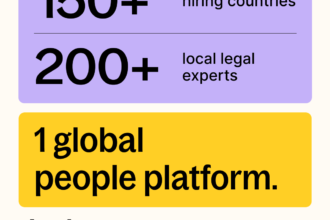We Hired a Developer Abroad Without a Legal Entity — Here’s What Happened
“Let’s hire that great developer in Brazil. We’ll figure out the rest later.”
It sounded like a win at the time.
A fast-growing SaaS company had just raised funding and wanted to build their product team quickly. They found the perfect full-stack developer in Brazil. Smart. Skilled. Affordable.
They hired him as a contractor and got to work. For 8 months, things went smoothly.
Until tax season hit.
The Reality Check
That’s when the problems started:
- The developer asked about employment benefits — and felt “left out” compared to in-house employees.
- Brazilian tax authorities questioned the contractor arrangement — triggering compliance concerns.
- Internal HR teams had no local expertise to manage documentation, benefits, or payroll.
The team faced legal risks, tax penalties, and an employee ready to walk.
The Real Lesson?
Misclassifying international hires as contractors can be a ticking time bomb.
Global hiring isn’t just about sending an offer letter.
It’s about local compliance, cultural connection, and sustainable operations.
So, What Should You Do?
Here’s a 3-step roadmap to hiring smart abroad:
1. Understand local employment laws.
Every country has unique rules. A contractor in the U.S. isn’t the same as one in France or Brazil.
2. Use an Employer of Record (EOR) if you don’t have an entity.
An EOR becomes the legal employer on paper, ensuring full compliance — while you manage the employee’s day-to-day.
3. Prioritize employee experience.
Remote or not, people want fairness, benefits, and a sense of belonging.
Key Takeaway
Hiring globally isn’t hard. But hiring wrong globally is expensive.
Start smart. Don’t let paperwork and compliance derail your international dreams.






